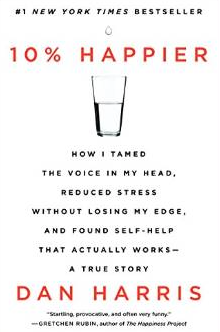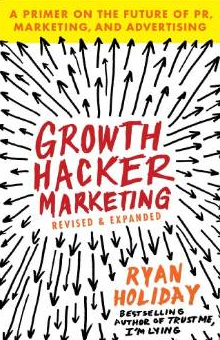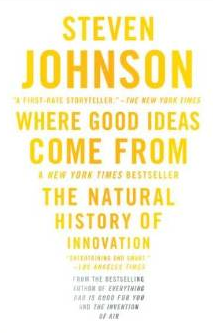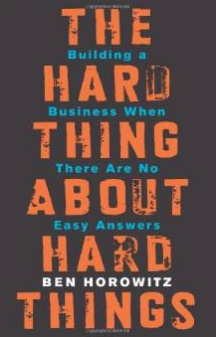I recently read “10% Happier: How I tamed the voice in my head, reduced stress without losing my edge, and found self-help that actually works” by Dan Harris. Below are the quotes I found most interesting. If you like the quotes, click here to buy the book.
 “Many of us labor under the delusion that we’re permanently stuck with all of the difficult parts of our personalities – that we are “hot-tempered,” or “shy,” or “sad”- and that these are fixed, immutable traits. We now know that many of the attributes we value most are, in fact, skills, which can be trained the same way you build your body in the gym.” (xv)
“Many of us labor under the delusion that we’re permanently stuck with all of the difficult parts of our personalities – that we are “hot-tempered,” or “shy,” or “sad”- and that these are fixed, immutable traits. We now know that many of the attributes we value most are, in fact, skills, which can be trained the same way you build your body in the gym.” (xv)
“As the Buddhists say, “the only way out is through.”
“Seeing a problem clearly does not prevent you from taking action, Mark explained. Acceptance is not passivity. Sometimes we are justifiably displeased. What mindfulness does is create some space in your head so you can, as the Buddhists say, “respond” rather than simply “react.” In the Buddhist view, you can’t control what comes up in your head; it all arises out of a mysterious void. We spend a lot of time judging ourselves harshly for feelings that we had no role in summoning. The only thing you can control is how you handle it.” (115)
“Dukkha doesn’t actually mean ‘suffering.’ There’s no perfect word in English, but it’s closer to ‘unsatisfying’ or ‘stressful.’ When the Buddha coined his famous phrase, he wasn’t saying that all of life is like being chained to a rock and having crows peck out your innards. What he really meant was something like, ‘Everything in the world is ultimately unsatisfying and unreliable because it won’t last.’” (142)
“Learn how to be happy ‘before anything happens.’” (144)
“But when you find yourself running through your trip to the airport for the seventeenth time, perhaps ask yourself the following question: ‘Is this useful’? (149)
“It’s not that I have different feelings, but I don’t identify and attach to them-or make them a huge drama. You allow your emotions to come pass through with ease.” (157)
“The pursuit of happiness becomes the source of our unhappiness.” (165)
“Once you unburden yourself from the delusion that people are deliberately trying to screw you, it’s easier to stop getting carried away.” (188)
“Striving is fine, as long as it’s tempered by the realization that, in an entropic universe, the final outcome is out of your control. If you don’t waste your energy on variables you cannot influence, you can focus much more effectively on those you can. When you are wisely ambitious, you do everything you can to succeed, but you are not attached to the outcome – so that if you fail, you will be maximally resilient, able to get up, dust yourself off, and get back in the fray.” (207)
“All I had to do was tell myself: if it doesn’t work, I only need the grit to start again – just like when my mind wandered in meditation.” (207)
“A monk said, ‘there’s no point in being unhappy about things you can’t change, and no point being unhappy about things you can.’” (210)
“Mediation is not about feeling a certain way. It’s about feeling the way you feel.” (231)
Liked the quotes? Buy the book here.





